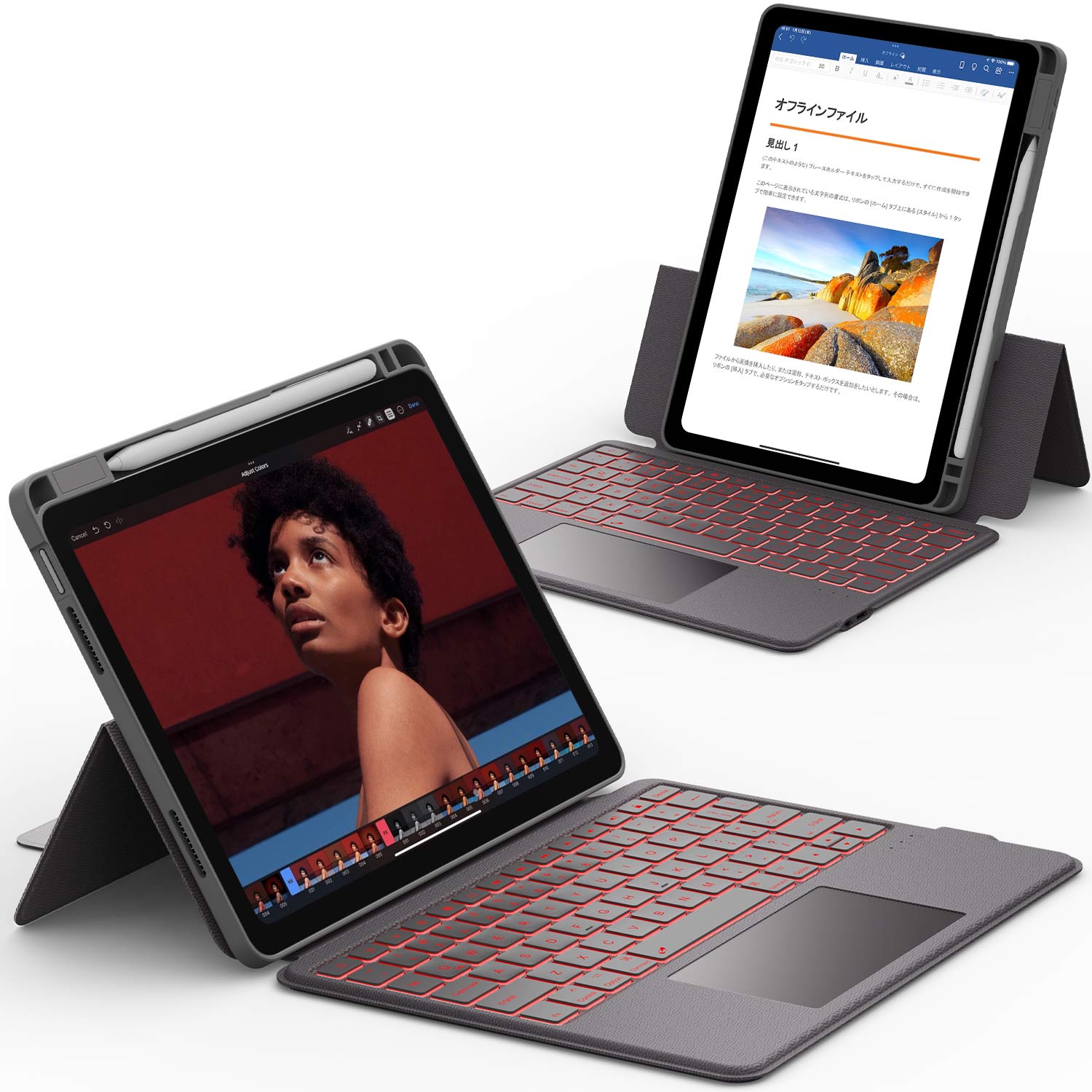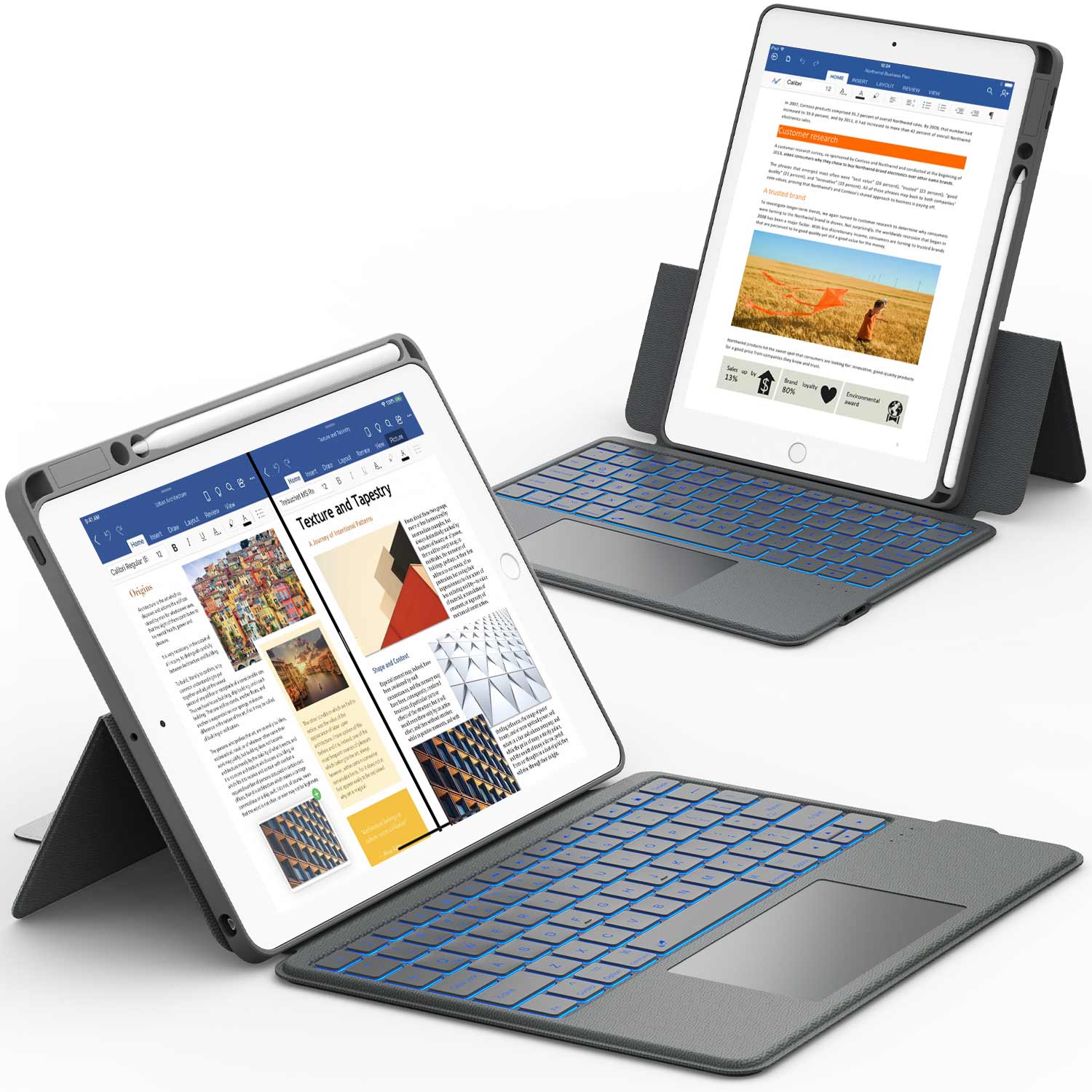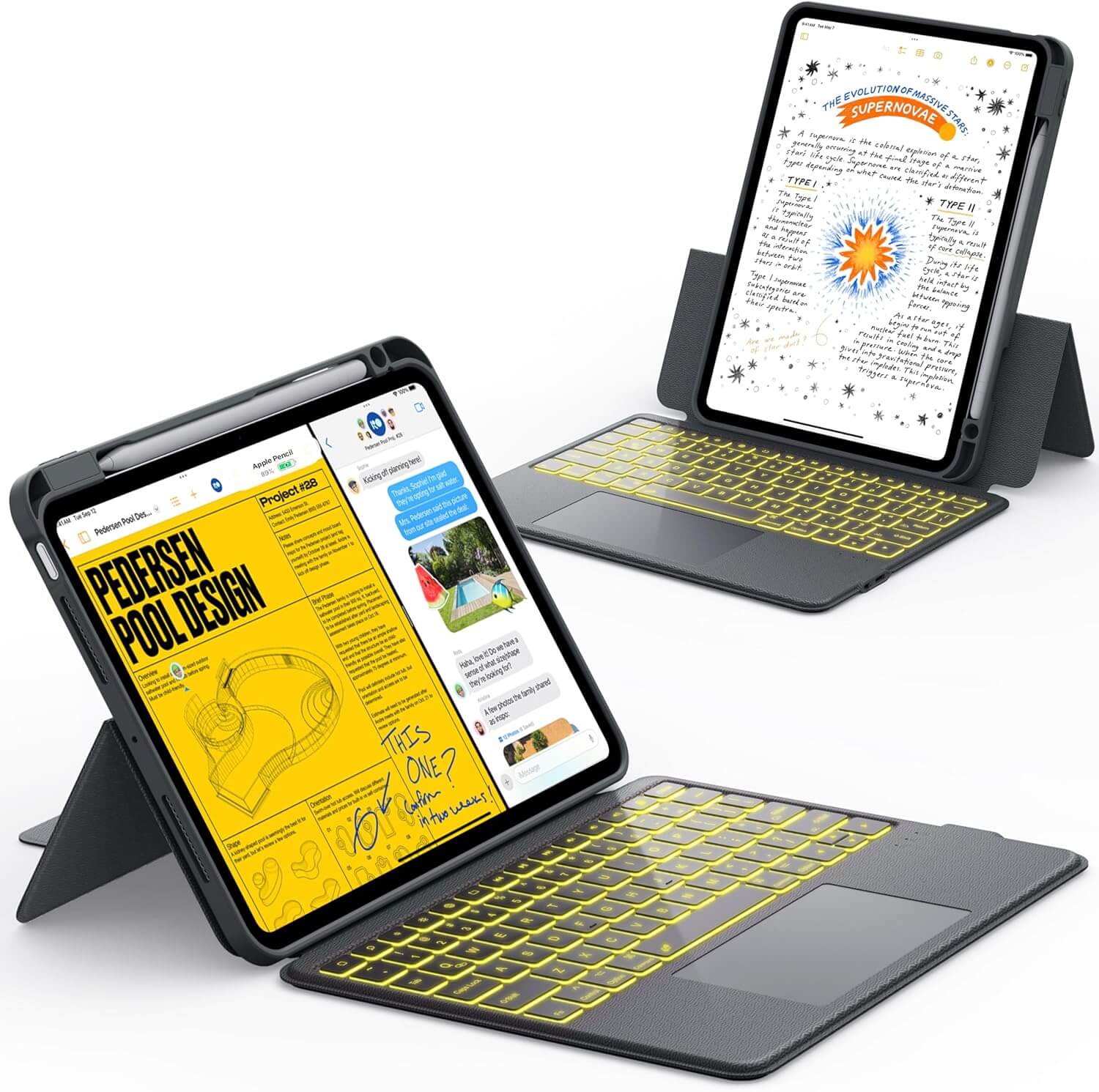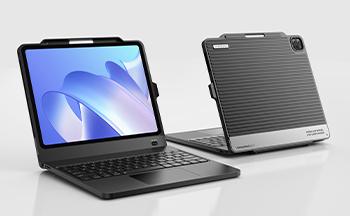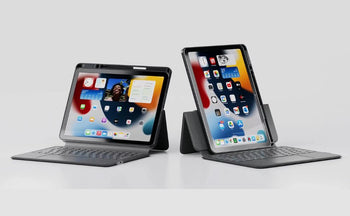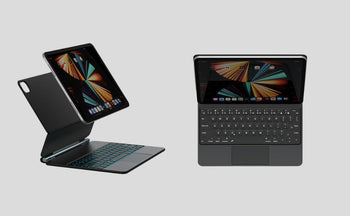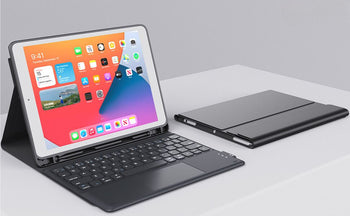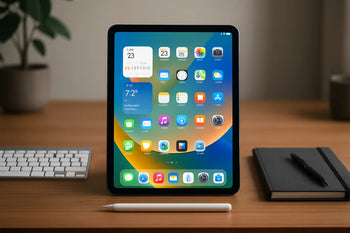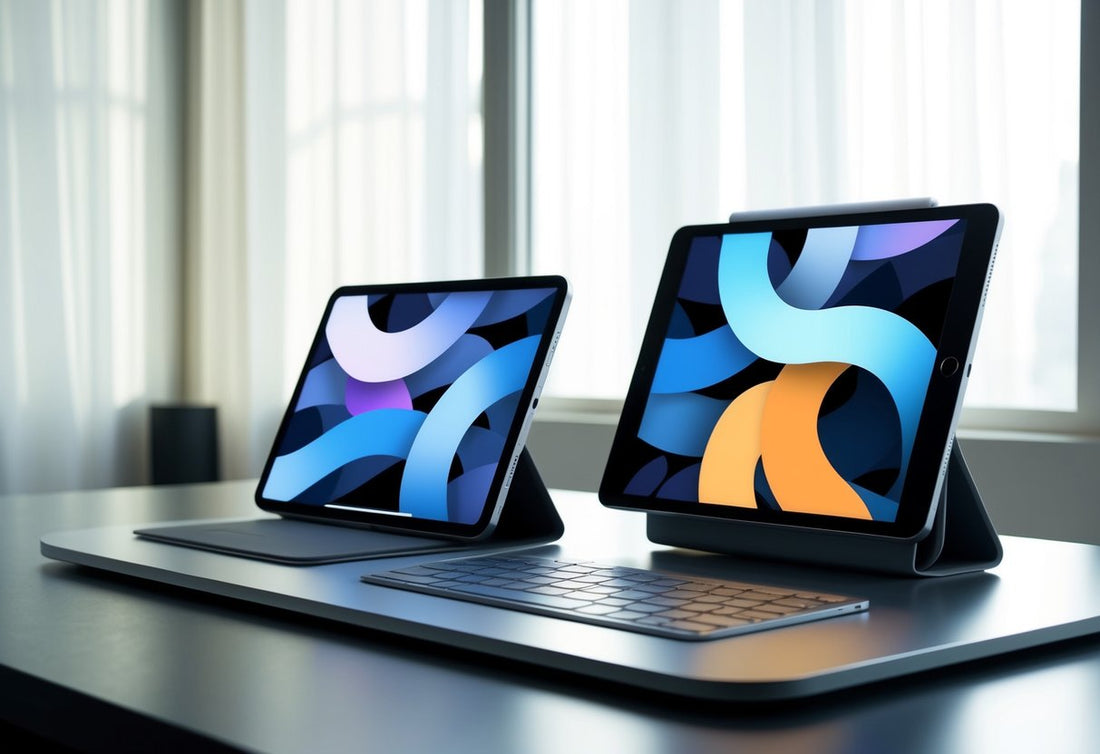When comparing the iPad Air vs iPad Pro, most users will find the Air offers exceptional value with nearly pro-level performance.
The iPad Air is the better option for the majority of users, delivering impressive capabilities at a more accessible price point.
Meanwhile, the Pro targets creative professionals with premium features like its OLED display and cutting-edge processor.
Both tablets support the Apple Pencil Pro and deliver stunning performance, but your specific needs should guide your choice. Read on to discover which iPad deserves a place in your digital life.
Summary Table
|
Feature |
iPad Air |
iPad Pro |
Winner |
|
Price |
Starts at $599 |
Starts at $799 (11") / $1,099 (12.9") |
Air (better value) |
|
Processor |
M2 chip |
M4 chip (up to 1.5x faster) |
Pro |
|
Display |
60Hz Liquid Retina (500 nits) |
120Hz Ultra Retina XDR (1000 nits full-screen, 1600 nits peak HDR) |
Pro |
|
Colors |
Blue, Purple, Starlight, Space Gray |
Silver, Space Black |
Air (more choices) |
|
Storage |
128GB - 256GB |
128GB - 2TB |
Pro (more options) |
|
RAM |
8GB |
8GB or 16GB (depending on storage) |
Pro |
|
Battery Life |
~11.25 hours |
~14.5 hours |
Pro |
|
Security |
Touch ID (power button) |
Face ID |
Depends on preference |
|
Connectivity |
USB-C (10Gbps) |
Thunderbolt/USB 4 (40Gbps) |
Pro |
|
Pencil Support |
Apple Pencil Pro |
Apple Pencil Pro |
Tie |
|
Sizes Available |
11" and 13" |
11" and 13" |
Tie |
|
Best For |
Students, casual users, budget-conscious professionals |
Creative professionals, power users, demanding workloads |
Depends on needs |
iPad Air vs iPad Pro: Key Differences
Display and Performance
When choosing between these tablets, consider what you'll see and how they'll perform. The iPad Pro gives you an Ultra Retina XDR display with smooth 120Hz scrolling that makes everything look better. It gets very bright (1000 nits, or 1600 nits for HDR). Its powerful M4 chip handles heavy tasks like video editing without breaking a sweat.
The iPad Air's Liquid Retina display still looks great but refreshes at 60Hz. Its M2 chip works well for most everyday tasks, even though it's not as powerful as the Pro.
Size and Design
Both come in 11-inch and 13-inch sizes, so size alone won't drive your decision. If you like colorful devices, the Air comes in blue, purple, and other fun colors. The Pro keeps it simple with silver and space black options.
The Pro gives you more storage choices (up to 2TB), while the Air maxes out at 256GB. Both work with the Apple Pencil Pro if you like to draw or take notes.
Features and Security
To unlock your device, the Pro uses Face ID, while the Air uses Touch ID in the power button. Both have good cameras, but the Pro adds professional video features that matter if you create content.
Value and Decision
The iPad Air starts at $599 compared to the Pro's $799 (11-inch). Ask yourself: Do you need the absolute best performance and display?
Choose the Air if you want a great tablet for everyday use, browsing, streaming, and light work. It offers the best value for most people. Choose the Pro if you do serious creative work, edit videos, or simply want the very best iPad experience and don't mind paying more for it.
Design and Build Quality Differences

Design and Build
Both tablets have slim designs with flat edges, but show their personality through different camera bumps and color choices. The Air comes in fun colors like blue and purple, while the Pro keeps it simple with silver and space black.
Both offer 11-inch and 13-inch sizes, giving you the same screen options whichever you choose. The Pro uses Face ID to unlock your device just by looking at it, while the Air puts Touch ID in the power button for quick access.
Display
The Pro's screen is noticeably better. It has ProMotion technology that makes everything look smoother with its 120Hz refresh rate—twice as fast as the Air's 60Hz display. The Pro screen also gets brighter (1000 nits vs. 500 nits on the Air), making it easier to see outdoors.
For watching movies or playing games, the Pro's Ultra Retina XDR display shows deeper blacks and more vivid colors than the Air's Liquid Retina display.
Performance
The Pro's M4 chip is about 30-40% faster than the Air's M2 chip for everyday tasks. For heavy work like video editing or 3D modeling, the difference grows even larger.
Most people won't notice this gap when browsing the web or checking email. But if you edit videos or play high-end games, the Pro's extra power makes a big difference.
Battery Life
The Pro lasts longer between charges—about 14.5 hours compared to the Air's 11.25 hours. Both will get you through a full day, but the Pro gives you more buffer for heavy use.
iPad Air vs. iPad Pro: Which Should You Get?
Choosing between these two excellent tablets depends on your needs and budget. Here's a comparison to help you decide:
For Everyday Users
If you mainly browse the web, stream videos, and handle light productivity tasks, the iPad Air ($599) is the smarter choice. Its M2 chip is plenty powerful for these activities, and you'll save at least $200 compared to the Pro. The 128GB storage works well if you use cloud services for files.
For Creative Professionals
The iPad Pro ($799+) makes sense if you're serious about creative work. The 120Hz ProMotion display makes drawing more responsive, while the brighter screen (1000 nits vs 500 nits) shows your work more accurately. The M4 chip processes large files faster when editing photos or videos. Storage options up to 2TB give room for large projects.
Display & Performance
The Pro's Ultra Retina XDR display offers significantly better quality for watching movies or editing photos. Its 120Hz refresh rate makes scrolling and animations look smoother than the Air's 60Hz screen.
While both tablets handle everyday apps easily, the Pro's M4 chip outperforms the Air's M2 for demanding tasks like video editing and 3D modeling.
Connectivity & Accessories
Both support Apple Pencil Pro and come in 11-inch and 13-inch sizes. The Pro's Thunderbolt port (40Gbps) transfers files faster than the Air's USB-C port (10Gbps), which matters if you work with external drives.
Compatible Accessories

Transform your iPad experience with the right accessories. For exceptional value and functionality, CHESONA offers premium keyboard cases designed specifically for both iPad Air and Pro models.
CHESONA's Backstand Series features magnetic detachable designs, 180° adjustable stands, and durable protection. For those seeking maximum protection, their Armor Dock Series offers rugged cases without sacrificing functionality.
When future-proofing your iPad purchase, consider not just the device specifications but also versatile accessories that extend functionality. CHESONA's lineup provides protection and productivity enhancements that will serve you well throughout your iPad's lifecycle, whether you choose the Pro's premium features or the Air's exceptional value.
Conclusion
The iPad Air delivers exceptional value with its M2 processor, Apple Pencil Pro support, and impressive performance—representing the smarter investment for most users unless you specifically need the Pro's advanced features.
For those demanding cutting-edge technology, the iPad Pro offers superior display quality and enhanced creative capabilities. However, the Air provides the perfect balance of performance and value for students, casual users, and many professionals.
Whichever iPad you choose, elevate your experience with a Chesona keyboard case. Their premium options for both iPad Air and Pro feature backlit keys, touchpad functionality, and durable protection, transforming your tablet into a productive workstation at competitive prices.
Also, read our guide: How to Maximize Functionality with iPad Keyboard Cases to maximize your iPad’s potential!
Frequently Asked Questions
How do the screen specs compare between the iPad Air and the iPad Pro for artists?
The iPad Pro has a significant edge for artists with its ProMotion display that refreshes at 120Hz. This makes drawing feel more responsive compared to the iPad Air's 60Hz screen.
The Pro also offers better color accuracy and brightness. Its mini-LED or XDR display (depending on the model) shows deeper blacks and more vibrant colors than the Air's standard display.
The Pro comes in larger sizes too. You can get a 12.9-inch iPad Pro, while the Air tops out at 11 inches. More screen real estate means more drawing space.
Can the iPad Air handle intense college coursework like the iPad Pro?
Yes, the iPad Air can absolutely handle college work.
The current Air uses the M2 chip which is plenty powerful for note-taking, writing papers, and research.
You'll have no issues running multiple apps, browsing with many tabs, or working with documents. The Air handles most student apps just as well as the Pro.
The main limitation is storage. The Air starts at lower storage options, so if you need to store lots of large files, you might need to pay more for extra space.
For content creators, which is the go-to device, iPad Air or iPad Pro?
Content creators often prefer the iPad Pro for its extra power.
The Pro's more advanced chip handles video editing and graphic design with less lag than the Air.
The Pro also has better cameras for shooting content. Its LiDAR scanner helps with AR applications, and the front-facing camera has Center Stage to keep you in frame.
Storage options matter too. If you work with large video files, the Pro offers up to 2TB of storage, while the Air maxes out at 256GB or 512GB depending on the model.
Is the battery life on the iPad Air as robust as the iPad Pro's for long gaming sessions?
Both iPads offer similar battery life - around 10 hours of web browsing or video watching. For gaming, expect 3-5 hours depending on how demanding the games are.
The Pro might drain slightly faster when playing graphics-intensive games because it pushes more pixels with its better display. However, the difference isn't huge.
What matters more is charging speed. The Pro supports faster charging with the right accessories, so you can get back to gaming quicker when your battery runs low.
